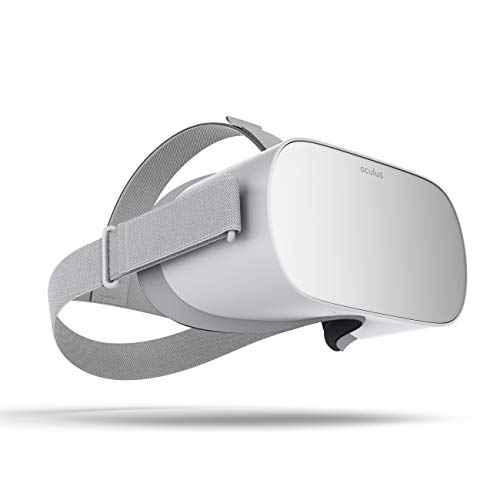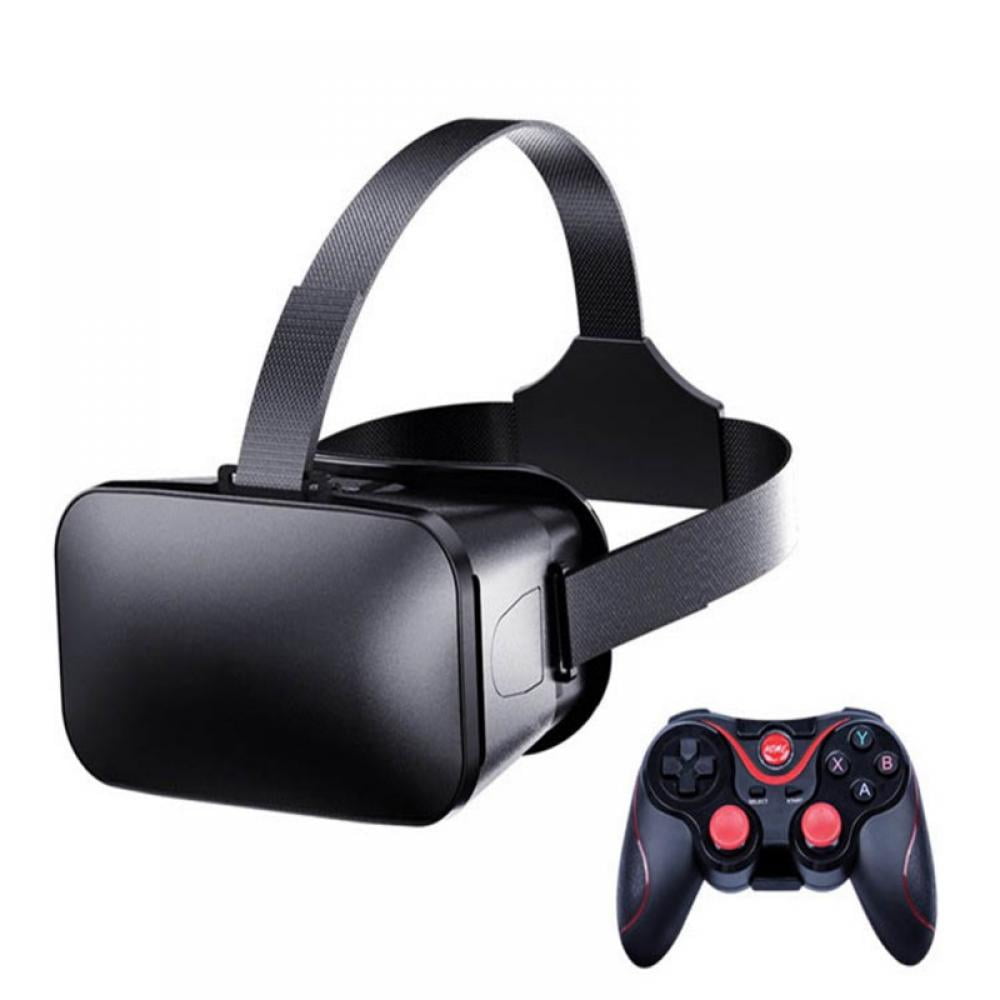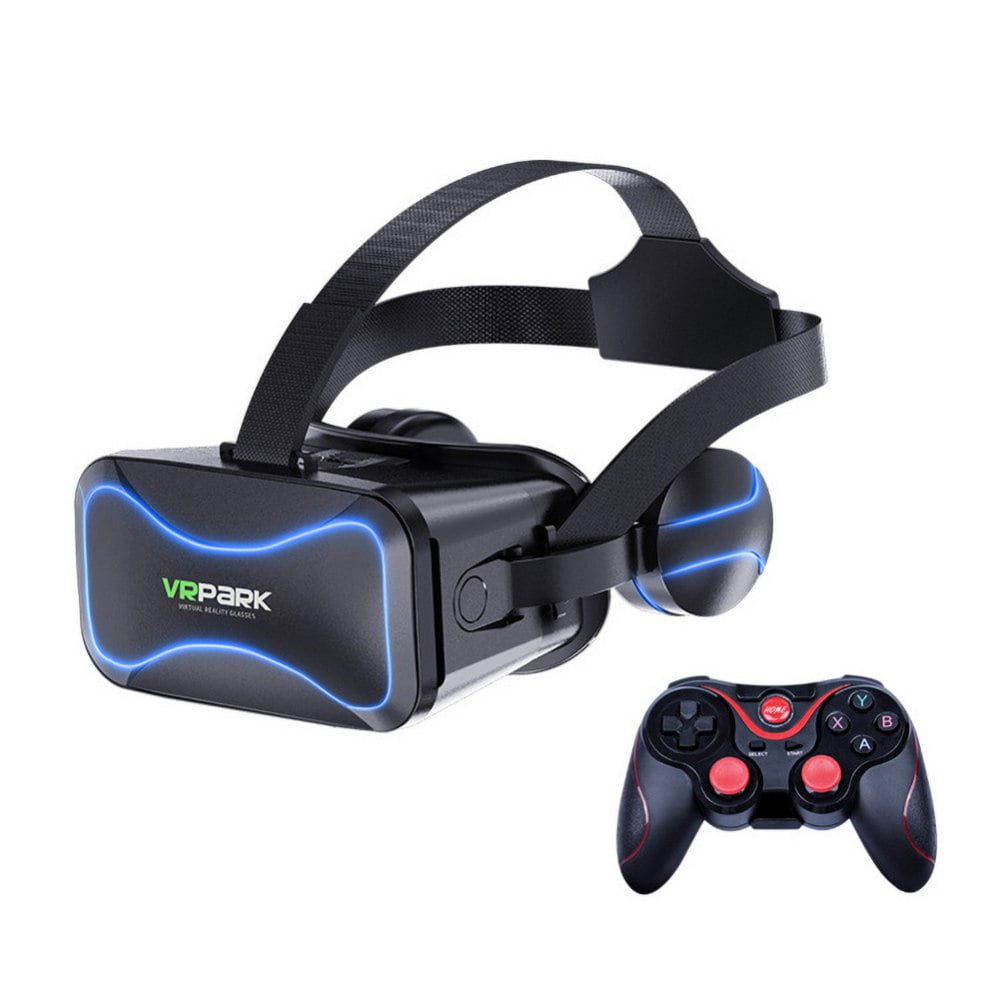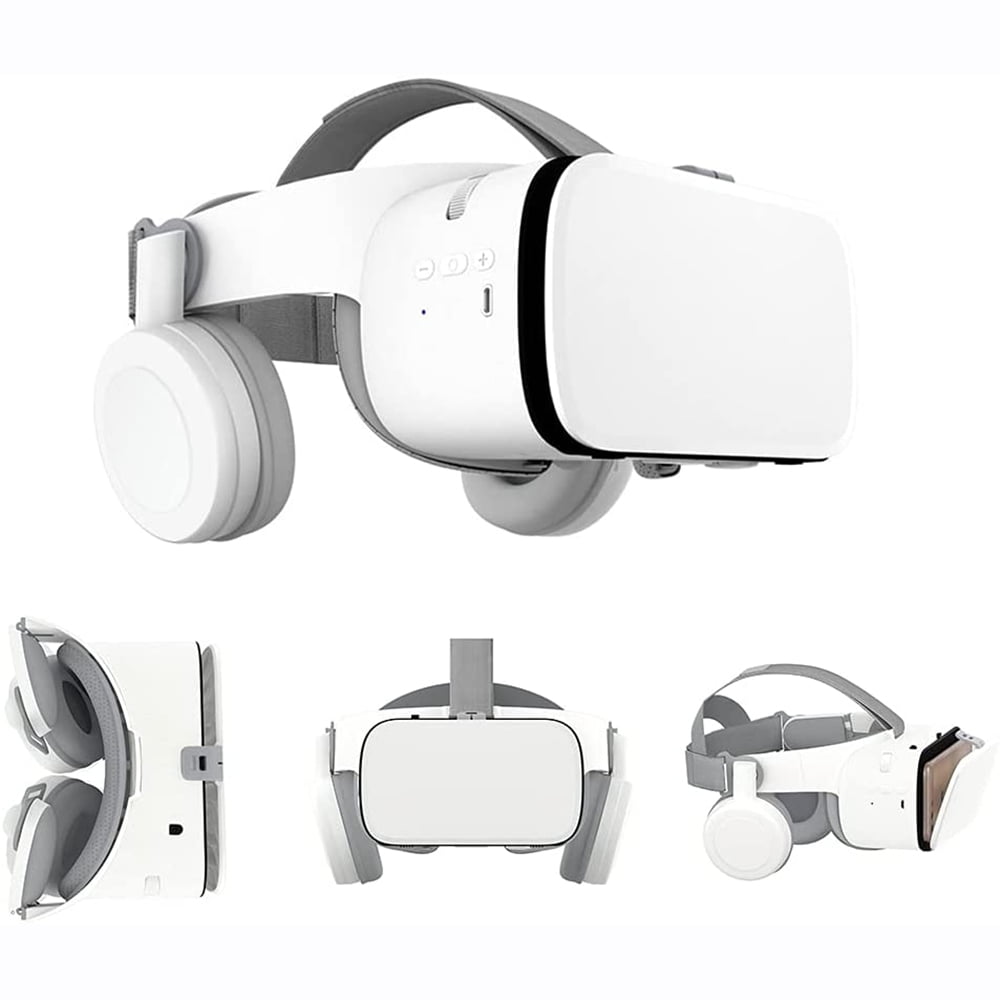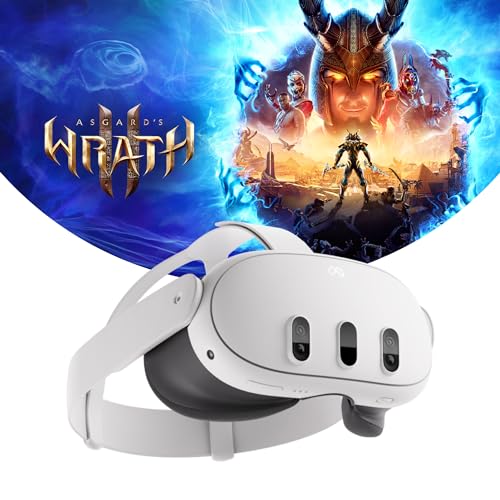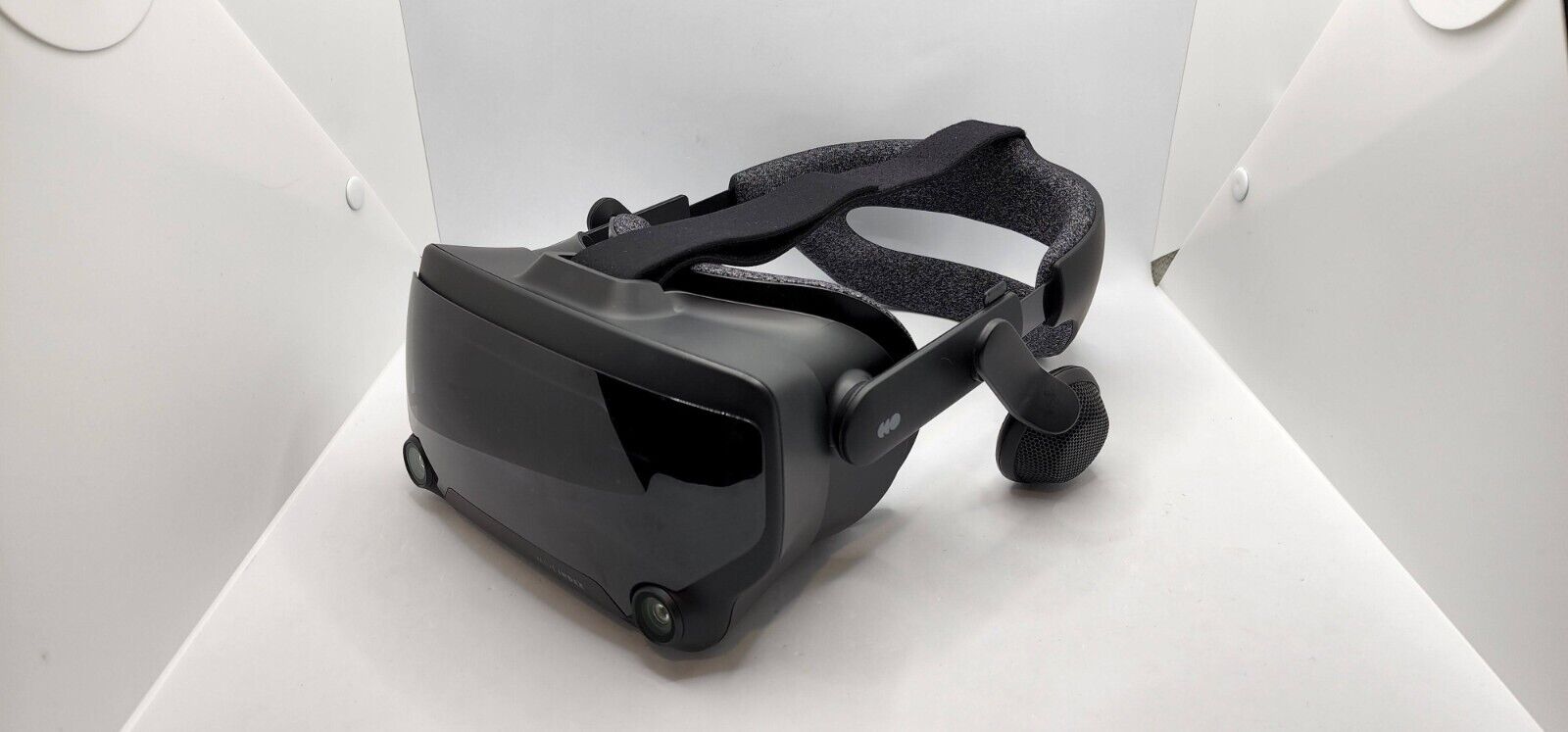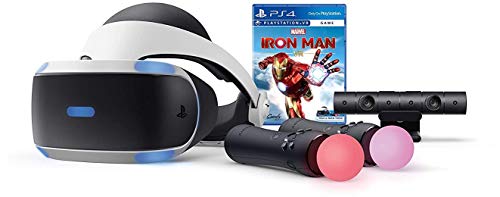Virtual Reality at Your Fingertips: The Best Headsets for an Unforgettable Experience
Understanding Virtual Reality
To fully appreciate the capabilities of virtual reality headsets, one must first understand the concept of Virtual Reality (VR) itself.
What is Virtual Reality?
Virtual reality (VR) refers to a computer-generated, three-dimensional virtual environment that users can interact with. This interaction is typically facilitated through a computer that is capable of projecting 3D information via a display. This can either be isolated screens or a wearable display, such as a head-mounted display (HMD). The system also includes user identification sensors for tracking movements within the virtual environment. VR can be divided into two categories: non-immersive and immersive. Immersive VR, in particular, utilizes a wearable display like an HMD to track a user's movement and provide a 360-degree virtual environment experience (NCBI).
Components of a VR Headset
A VR headset, which is a form of wearable technology, is a key tool that provides users with an immersive, three-dimensional experience. It achieves this by utilizing a head-mounted device that includes a display screen, stereo sound, sensors, and compatible controllers.
Specifically, a VR headset includes the following components:
- Display: This is usually a single screen or dual LCD displays with a high refresh rate to ensure smooth visuals.
- Lenses: These are utilized to separate the screen into two images and to reshape the picture for each eye to create a stereoscopic 3D effect.
- Sensors: These track the user's head and body movements to adjust the view in the virtual world accordingly.
- Input devices: Controllers that bridge the real and virtual worlds, allowing users to interact with the virtual environment.
- Audio: Immersive audio technology provides a 360-degree audio experience, enhancing the overall VR experience.
- Comfort features: These include adjustable straps, padding, and weight distribution to ensure user comfort during extended use.
- Connectivity options: These can include HDMI, USB ports, and wireless connectivity for data transfer and device pairing.
In essence, VR headsets orient the new "digital world" with the real world, deceiving the brain into thinking the user is in a new environment. This is done utilizing AI, sensors, and algorithms to create virtual objects in a spatially mapped environment.
This understanding of VR and its components sets the stage for a deeper exploration into the world of VR headsets, their uses, and the factors to consider when choosing one. Whether for gaming, fitness, education, or professional applications, VR headsets open up a world of immersive experiences.
Popular VR Headsets in the Market
As virtual reality continues to captivate tech enthusiasts and casual users alike, a variety of virtual reality headsets have emerged, each with unique features and capabilities. Let's delve into some of the most popular options currently available in the market.
Oculus Quest 3
The Oculus Quest 2, released in October 2020, is considered the best VR headset overall due to its high resolution, 90Hz refresh rate, and wireless capabilities. It offers an affordable entry point for newcomers to virtual reality gaming and is praised for its excellent performance.
$499.00
4.41 out of 5 starsMeta Quest 3 128GB: Next-Gen VR Experience Bundle
Immerse Yourself in Unprecedented Virtual Reality Adventures with Meta Quest 3 128GB VR Experience Bundle
Product information
Product Review Score
Product links
Valve Index
The Valve Index, released in June 2019, provides an immersive experience that serious VR enthusiasts find hard to resist. It boasts a resolution of 1440x1600 per eye and a 120Hz refresh rate, ensuring a high-quality visual experience. Excellent tracking, controllers, and advanced features round out this high-end VR headset.
$389.95
4.3 out of 5 starsValve Index VR Headset with Face Cushion
Immerse Yourself in Gaming with Valve Index VR Headset and Soft Face Cushion
Product information
Product Review Score
Product links
Sony's PlayStation VR
Sony's PlayStation VR, launched in October 2016, is an excellent choice for console gamers looking to dip their toes into the world of virtual reality. It's commended for its comfort, ease of use, and affordability, making VR experiences accessible to a larger audience (PC Gamer).
$349.99
$212.93
4.34 out of 5 starsPlayStation VR - Marvel's Iron Man Bundle
Experience the Ultimate Superhero Adventure with PlayStation VR and Marvel's Iron Man Bundle
Product information
Product Review Score
Product links
HTC Vive Cosmos Elite
The HTC Vive Cosmos Elite hit the market in March 2020 and offers a sharp display, comfortable design, and compatibility with a wide range of accessories. Its strong tracking and controllers offer an expansive VR experience, making it a good option for experienced users (PC Gamer).
4.99 out of 5 starsHTC Vive VR Headset Full System Kit
Immerse Yourself in Virtual Reality with the Full Kit HTC Vive VR Headset
Product information
Product Review Score
Product links
Pimax 8K X
The Pimax 8K X, introduced in January 2020, is known for its incredibly high resolution, with native 4K displays per eye. This headset offers an exceptionally sharp and detailed VR experience but requires a powerful PC to run effectively. It's targeted at users who prioritize visual fidelity above all else in virtual reality.
These VR headsets represent the upper echelon of virtual reality technology, each with their unique strengths. Whether you're a newcomer to VR or a seasoned enthusiast, there's a headset out there to match your needs and preferences. Remember, virtual reality is just one aspect of the ever-growing world of wearable technology, which also includes fitness trackers, smartwatches, and augmented reality glasses.
$499.00
4.74 out of 5 starsPimax 5K Plus VR Headset for PC Gamers
Immerse Yourself in Unparalleled Virtual Reality Experience with the Pimax 5K Plus VR Headset for PC Gamers
Product information
Product Review Score
Product links
Exploring Uses of VR Headsets
The rise in popularity of virtual reality headsets has revolutionized various industries, introducing new ways to train, learn, design, and explore. They are no longer limited to the realm of gaming. This section will delve into the use of virtual reality technology in healthcare, automotive industry, education, and architecture.
VR in Healthcare
In healthcare, virtual reality headsets are making significant contributions. They are instrumental in training healthcare specialists for precise operations and enabling patients to work through phobias and anxieties in a controlled environment (Trio](https://www.trio.dev/blog/virtual-reality-applications)). Additionally, they are being utilized for patients undergoing painful procedures, such as burn wound care and physiotherapy, to distract them and reduce their pain perception (VirtualSpeech). For more on the use of wearable technology in healthcare, check out our article on [wearable technology for healthcare.
VR in Automotive Industry
Virtual reality technology is also finding its way into the automotive industry. Through VR headsets, manufacturers can analyze road scenarios and the behavior of cars, allowing them to make changes to prototypes before developing new models (Trio). This technology is significantly cutting down on development costs and enabling safer, more efficient vehicle designs.
VR in Education
Educational institutions are leveraging the capabilities of virtual reality for professional training, educational games, and virtual field trips. Students can experience the world in a virtual setting, making learning more engaging and interactive (Trio). They can explore historical events, scientific concepts, and art firsthand, enhancing their understanding and retention of the material (VirtualSpeech).
VR in Architecture
In the field of architecture, VR headsets are proving to be a game-changer. Architects can not only visualize but also experience spaces before they are built, enabling real-time changes to ensure customer satisfaction (Trio). Clients can take immersive walkthroughs of buildings and spaces before they are constructed, providing a more realistic view of the final product (VirtualSpeech).
These are just a few of the many applications of virtual reality headsets. From gaming to health and education to design, these devices are transforming experiences and workflows across industries. As technology advances, so too will the capabilities of VR headsets, making them an exciting technology to watch in the coming years.
Considering VR Headsets: Factors and Features
When it comes to immersing oneself in the virtual world, choosing the right VR headset can significantly enhance the experience. There are a number of factors to consider before making a decision, including comfort and ease of use, visual quality and performance speed, and room-scale tracking and compatibility with other devices (CNET).
Comfort and Ease of Use
Comfort is a crucial aspect when considering a VR headset. A comfortable headset will allow for extended use without causing discomfort or strain. Look for features such as adjustable straps, cushioning, and a light form factor. The headset should also be easy to use, with intuitive controls and a user-friendly interface.
Ease of use extends to the setup and configuration process. Some headsets may require external sensors or additional hardware, while others are standalone devices. Consider your technical proficiency and the amount of effort you're willing to put into setting up the system.
Visual Quality and Performance Speed
The visual quality of a headset depends on the resolution of the display and the refresh rate. Higher resolution provides a more detailed and vivid image, while a high refresh rate ensures smooth motion. These features contribute to a more immersive and realistic virtual reality experience.
The performance speed of a VR headset relates to how quickly it can process and respond to inputs. A headset with good performance speed will provide a seamless and lag-free experience, crucial for maintaining immersion and preventing motion sickness.
Room-Scale Tracking and Compatibility
Room-scale tracking allows users to move freely within a defined space, enhancing the immersive experience of VR. This feature can heighten the sense of presence in the virtual world, allowing for more natural and intuitive interaction.
Finally, compatibility with other devices is another important consideration. Some VR headsets are designed to work with specific gaming consoles or PCs, while others can function independently. It's essential to ensure that the VR headset you choose is compatible with any devices you plan to use it with.
When considering VR headsets, it's all about finding the right balance that suits your needs and preferences. From fitness trackers to smartwatches, wearable technology devices are becoming increasingly popular. As such, making an informed decision about the best VR headset for you can lead to an unforgettable virtual reality experience.
The Future of VR Headsets
As technology continues to evolve, the future of virtual reality headsets is full of exciting potential. Looking ahead, we can expect to see growth in VR content, advancements in headset features, and expanded professional applications.
Growing VR Content Segment
Virtual reality (VR) is the fastest-growing content segment globally. Research suggests that VR content will grow at a compound annual rate of 30 percent between 2021 and 2025, surpassing over-the-top (OTT) video, video games, and traditional cinema. This growth will provide users with an even wider range of immersive experiences, making VR an increasingly attractive option for both entertainment and professional use.
Advanced VR Headset Features
The hardware of VR headsets is also advancing at a rapid pace. Future VR headsets will come equipped with productivity apps that enable users to create product designs in VR, save designs as 3D files to the cloud, and have high screen refresh rates to render and update content instantaneously. These advancements will create a more seamless and efficient user experience, opening up new possibilities for creativity and collaboration.
VR in Professional Applications
Professional applications of VR are expanding beyond the gaming and entertainment industries. For instance, Iberdrola, a Spanish electric utility company, is using VR technology to train workers in critical maintenance and safety protocols. VR headsets enable Iberdrola employees to visualize complex scenarios, interact with simulated environments, and practice emergency responses in a safe, controlled virtual setting. This use of VR has shown promising results in enhancing the skills and knowledge of its workforce, contributing to increased safety measures and operational effectiveness in the energy industry.
Beyond training, VR can be used for product design and prototyping, allowing designers to visualize and test 3D models in a virtual environment. This reduces the time, cost, and effort required for physical prototyping and can show how a product would react under different conditions.
Furthermore, in education, VR has the potential to revolutionize learning by providing immersive and interactive experiences. This can keep students engaged, allow them to explore environments and concepts that are impossible to visit in reality, and enable virtual laboratory experiments and online asynchronous learning.
As we look forward to the future of VR headsets, it's clear that this technology is set to become an integral part of our lives. As the VR content segment continues to grow, as advanced features are introduced, and as professional applications expand, we can expect an even greater immersion into the virtual world. If you're interested in other wearable technology devices, such as fitness trackers, augmented reality glasses, smartwatches, or smart clothing, be sure to explore our other articles on these topics.
Practical Applications of VR Headsets
Virtual reality headsets, often associated with gaming and entertainment, have a wide range of practical applications that extend beyond these areas. Industries such as healthcare, design, and education have started leveraging VR technology to enhance their practices. Let's delve into these applications.
VR in Training Scenarios
One of the key applications of virtual reality headsets is in training scenarios. These devices can simulate real-world situations, allowing individuals to gain hands-on experience in a safe and controlled environment. For instance, public speaking, medical procedures, emergency response drills, and more can be practiced effectively using VR headsets. This immersive approach to learning can often result in better retention and understanding of the tasks at hand(VirtualSpeech).
VR in Pain Management
Healthcare is another area where VR headsets are making a significant impact, particularly in pain management. When patients undergo painful procedures, such as burn wound care or physiotherapy, VR technology can be used to create immersive experiences that distract patients and reduce their perception of pain. This innovative approach to pain management can greatly enhance patient comfort and overall experience during treatment.
VR in Design and Construction
Virtual reality headsets also hold great potential in the field of design and construction. Architects and designers can use VR to create immersive walkthroughs of buildings and spaces before they are constructed. This allows clients to have a more realistic view of the final product, enabling them to make better-informed decisions about the design and layout.
VR in Interactive Education
In the realm of education, VR headsets can transform traditional teaching methods into interactive and engaging experiences. Students can use VR to explore historical events, understand complex scientific concepts, and even create art in a more hands-on way. This immersive approach to learning can make education more exciting and appealing to students, enhancing their understanding and retention of the subject matter (VirtualSpeech).
Virtual reality technology, with its ability to create immersive and realistic experiences, is proving to be a beneficial tool in various applications and fields including medicine, engineering, education, and entertainment. As the technology continues to evolve, the utility of VR headsets is expected to grow, further enhancing their practical applications. This demonstrates the potential of wearable technology devices in various sectors, beyond just fitness trackers and smartwatches.
